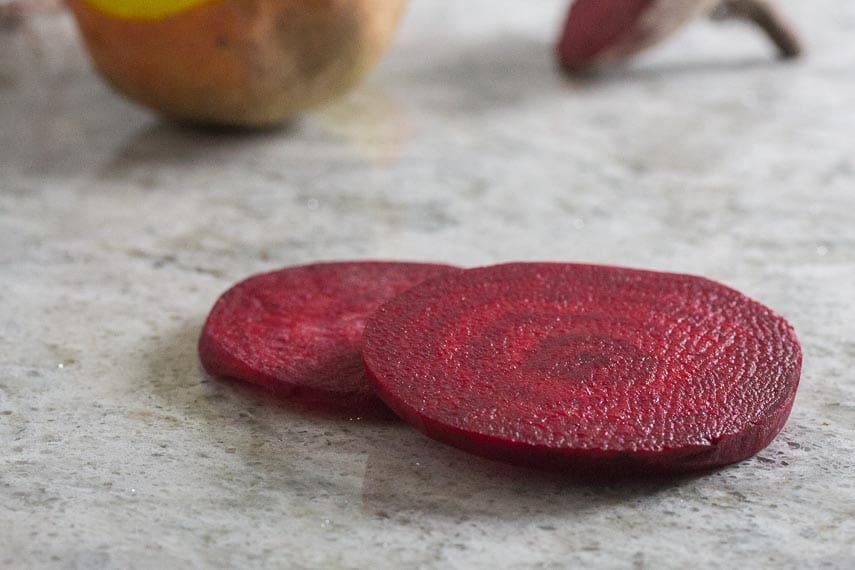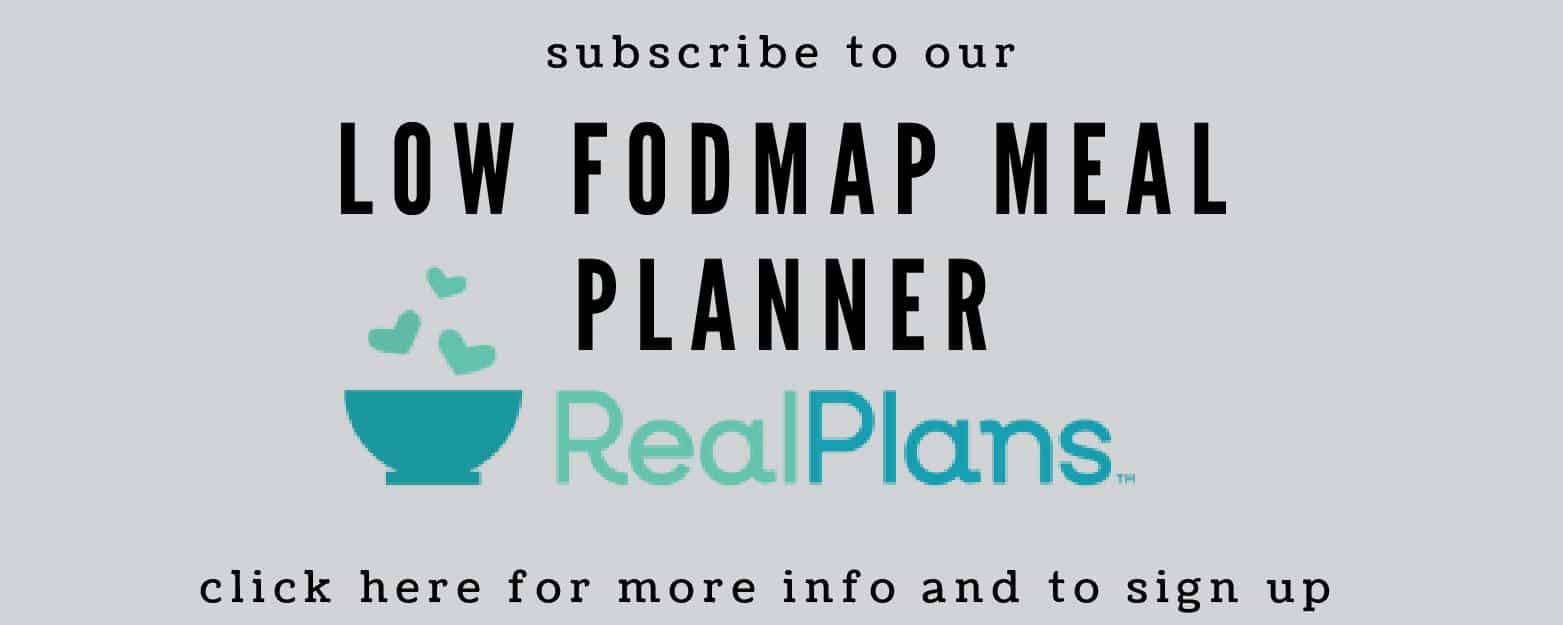Low FODMAP Fun with Beets – Make Beet Yogurt Dip
Yotam Ottolenghi always inspires me and the moment I saw him Beet Yogurt Dip, I was entranced. He is based in the UK – if you are lucky enough to be near one of his restaurants, by all means check them out.
If you are not familiar with this work, I encourage you to peruse online or check out his cookbooks, of which there are several. This Beet Yogurt Dip with Walnuts is a low FODMAP riff on a recipe of his from his book Jerusalem that first attracted me by its visuals.
Just look at the color! I wanted to dive in right away and knew I had to create a FODMAP IT!™ version.
Are Beets Low FODMAP?
Also called “beetroot”, this fresh root vegetable has been lab tested by both Monash University and FODMAP Friendly. Monash has determined that a Green Light low FODMAP amount is 25 g, while FODMAP Friendly gives them a “PASS” at ½ cup (75 g). Both testing bodies have also lab tested picked beetroot and both show lab results of no FODMAPs detected, and set the serving size at 75 g. Canned beetroot has also been tested. Monash lab tests show 60 g as low FODMAP. FODMAP Friendly suggests a serving size of 60 g as low FODMAP, with a max serving size of 150 g.
For a discussion about why lab tests differ, please see this article.
A 25 g serving of beets might not sound like a lot, but just take a look below.
The image above shows you what 25 g of beets looks like. This can go a long way in a recipe, depending on how you use them, such as in this recipe.
In greater portions, beetroots are high in Oligos (fructans and GOS). If you already know that you can eat more of these FODMAPs, then you can have a more generous portion.
You do need a well-flavored garlic-infused oil for this recipe. You can make your own, or use one like FODY Garlic-Infused Olive Oil.
A Note About Pickled Beets: We assume that if you are diving into this recipe that you are a beet fan and therefore might have noticed that pickled beets have been lab tested by Monash University. They have received a Green Light and the low FODMAP serving size is stated as 2/3 cup or 75 g. Not only is that a generous portions, but the small print says that no FODMAPs were detected. How could that be?
An intrepid community member, Maggie, reached out to Monash to ask them for more details and here is what we learned: The pickled beetroot that Monash tested was vinegar-pickled (rather than lacto-fermented) and it was a jarred, pasteurized product that was tested. Monash noted that they think the time in the jar is the factor that makes the difference. Maggie contemplated further and suggested that the fructans in the beets are water-soluble, and that over time they leach into the vinegar solution, leaving the beets themselves lower in FODMAP compounds.
The big takeaway here is that processing DOES affect fruits and vegetables and sometimes extrapolations cannot be made assuredly. And sometimes the changes are against us, and sometimes, as here, they are in our low FODMAP favor.

FODMAP IT!™ Beet Yogurt Dip with Walnuts
This FODMAP IT!™ Beet Yogurt Dip with Walnuts was inspired by a Yotam Ottolenghi recipe. You can eat beets in small portions on the low FODMAP diet. This recipe puts the small amount to great use.
Ingredients:
- 4 ounces (115 g) fresh red beetroot (about one large)
- 1 1/3 cup (327 g) lactose-free yogurt, divided
- 1 tablespoon Garlic-Infused Oil made with olive oil, or FODY Garlic-Infused Olive Oil plus extra
- 1/2 teaspoon lemon juice
- Kosher salt
- 1/2 cup (50 g) toasted walnut halves, chopped
- Fresh flat leaf parsley
- Flaky salt
- Jalapeno slices, optional
Preparation:
-
Position rack in upper third of oven. Preheat oven to 375°F/190°C.
-
Trim beetroot and stems away and discard. Scrub beetroot well and dry thoroughly. Wrap the beet in aluminum foil and bake for about 45 to 50 minutes or until tender when pierced with a knife. Unwrap and cool. Beet may be roasted a day ahead and refrigerated.
-
While beet is roasting and cooling, line a wire-meshed strainer with cheesecloth and set over a bowl. Scrape yogurt into strainer and allow to drain while you are roasting the beet. Discard any liquid that has accumulated in bowl.
-
Cut cooled beet into chunks and place in food processor fitted with metal blade. Pulse on and off then process until finely chopped. Add ⅓ cup (82 g) yogurt and pulse on and off, then process until smooth. Pulse in 1 tablespoon of Garlic-Infused Oil and lemon juice. Taste and season with kosher salt as desired.
-
Schmear the 1 cup (245 g) of yogurt on a platter. Top with beet mixture, using image as a guide. Drizzle with some reserved Garlic-Infused Oil. Scatter walnuts on top, some parsley and some flaky salt. If you like it hot, add a few slices of jalapeno. I opted not to for the image. The original recipe did include chile peppers. Serve immediately with low FODMAP vegetables or thin slices of low FODMAP baguette.
Notes:
Tips
- We hope this recipe got your attention. We think of it as a teaching recipe! We love pointing out ingredients that at first glance you might think are off-limits - like beets - and showing you how by managing portions that you CAN enjoy them.
Nutrition
All nutritional information is based on third-party calculations and should be considered estimates. Actual nutritional content will vary with brands used, measuring methods, portion sizes and more. For a more detailed explanation, please read our article Understanding The Nutrition Panel Within Our Recipes.











This is one of my favorite Ottolenghi recipes! And you’ve just reminded me that I also love a recipe of his using butternut squash, which I bet will be just great with kabocha.
A question about beets? I see in the Monash app that PICKLED beets are low-FODMAP to a 75-gram serving and beyond. I typically pickled my own beets, Russian-style, using salt and sugar and some spices and vodka. Do you think that counts as “pickled,” or are the Monash folks using some definition of “pickled” that we in the US may not be privy to?
Maggie, I LOVE your questions. Full answer under 2nd question.
Still on my beet question, and trying to clarify: What I meant to say was that I am familiar with pickled beets made with vinegar and flavorings, and do you think that’s what is meant by “pickled” beets, in the Monash app, or are they referring to fermented beets, made like saurkraut, where the pickling medium is not vinegar but the lactic acid produced by the interaction of vegetables and salt? I realized this sounds like a silly distinction, but I know that lacto-fermentation (that’s the saurkraut-y thing) creates bacterial changes in the vegetable that “quick-pickling” (with vinegar) does not.
Your questions are very smart questions and I like how you think. You are recognizing some of the limitations of the Monash app, about which I have had many conversations with their team. When they say “pickled beets” and we do not have a brand and exact item given, we do not know the order of list of ingredients. We don’t know if there is high fructose corn syrup. We do not know if this was an item that does contain onions and or garlic and that their serving size is due to that. We do not know if it is pasteurized and at which point the mixture was canned. So, what this means is that the app entry is a VERY broad recommendation. Now, I still find it helpful because I think it gives people hope and maybe the willingness to try some pickled beets when before they might not have. You might find my recipe for kimchi and our article about kimchi interesting. What it all really comes down to is that if you have a homemade batch or if you have a commercial item you want to try, and you are stable and in your Challenge Phase, then try them! Your unique digestive results are what is important anyway. We also have an article called What Is A Low FODMAP Serving Size? and also What If A Food Has Not Been Lab Tested For FODMAPs? that you might find good reading. Thank you for being such an engaged community member!
Hi Dede,
Some good news! I contacted Monash with my beetroot question, and they just got back to me, saying that the “pickled beetroot” that had tested, which tested out as low-FODMAP at a 2.65-oz serving (and perhaps beyond) was vinegar-pickled (rather than facto-fermented) beets. However, it was JARRED pickled beets that were tested (I’m assuiming they picked a brand that uses all low-FODMAP ingredients — no HF corn syrup, etc.) and found to be safe, and the Monash folks note that they are guessing that the time in the jar is the factor that makes the difference. I’m going to go further and suggest that the fructans in the beets are water-soluble, and that over time they leach into the vinegar solution, leaving the beets themselves lower in FODMAP compounds. It’s beet season here in the Northeast, so I’m thinking I’ll make up a batch of vinegar-pickled beets (I am SO glad! I’m not a big fan of lector-ferments) and use them in pretty small doses. If you like, I’ll post a recipe. Thanks again — Maggie
This is awesome! I might add something to the recipe for others to know! I wish Monash would just give us more info from the get-go on the apps because the guessing game doesn’t help an already convoluted situation. Good for you for following up! Now I can rest assured that I am not the only one asking “these kinds” of questions.
How do canned and pickled differ?
It would depend on the products. In general, simply canned are cooked. Pickled could be prepared with vinegar or fermented.